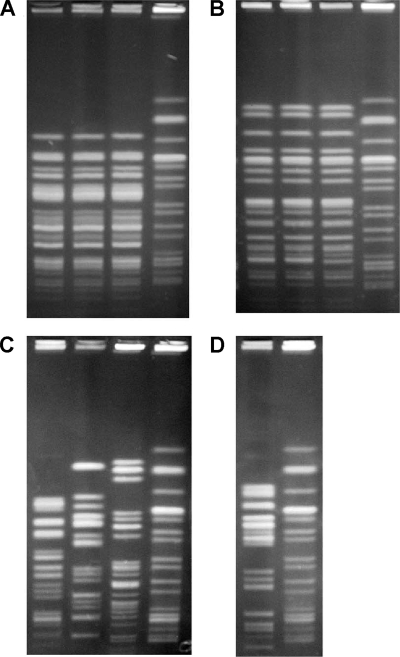FIG. 5.
PFGE of ampicillin-resistant E. coli isolates obtained from feces of steers in the control group, i.e., receiving no dietary antibiotic in their feedlot diets throughout the study. In each frame, the lane on the far right contains a reference strain, E. coli E318N. Isolates shown in panels A and B were obtained on days on which all 10 steers in a given pen were positive for ampicillin-resistant E. coli (see Fig. 4); those in panels C and D were collected on the first sampling day after arrival at the feedlot. (A) Isolates collected on day 113 from three steers in pen 19; (B) isolates collected on day 246 from three steers in pen 21; (C) isolates collected from the same three steers as shown in panel A, but on day 15; (D) isolate from the single steer in pen 21 that was positive for ampicillin-resistant E. coli on day 15. Panels A and B contain representative data, since the isolates collected from all 10 steers in these pens produced identical banding patterns. In contrast, the day 15 isolates differed among steers within the pen (in the case of pen 19). Note that within a pen, the banding patterns differed between day 15 isolates and those collected from the same steers later in the feeding period (panel C versus panel A; panel D versus panel B).

